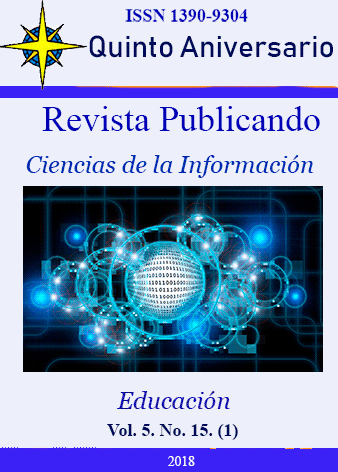Resumen
The purpose of the present article is to explore V. Nabokov”™s “Ada” through the lens of sensory metaphor. Sensory metaphor is one of the metaphor subtypes linked to such areas of perception as visual, auditory, gustatory, olfactory, tactile in temperature, tactile in texture. Through sensory metaphors one can better understand the notion of embodied cognition, as they are rooted in our day-to-day reasoning. V. Nabokov makes abundant use of sensory metaphors in his “Ada” to trigger the most original associations and give rise to the most vivid images in the minds of the reader. For instance, aroma is interpreted through the category of light; terror – through the category of food; message, time, desire, etc. – through the category of texture, etc. In terms of sensority, tactile in texture metaphors constitute an overwhelming majority.Referencias
Charteris-Black, J. Metaphor and Vocabulary Teaching in ESP Economics // English for Scientific Purposes. 2000. no 19. P. 149 – 165.
Corpus-based Approaches to Metaphor and Metonymy. / Ed. by A.Stefanovitsch, S.Th.Grice. Berlin: Mouton de Gruyter, 2006. 378 p.
Croft, W.; Cruse, D.A. Cognitive Linguistics. Cambridge: Cambridge University Press, 2004. 356 p.
Deignam, A. Corpus-based Research into Metaphor // Researching and Applying Metaphor / Ed. by L.Cameron, G.Low. Cambridge: Cambridge University Press, 1999. P.177 – 199.
Deignam, A. Metaphor and Corpus Linguistics. – Amsterdam/ Philadelphia: John Benjamins Publishing Company, 2005. 236 p.
Fauconnier, G.; Turner, M. Conceptual Integration Networks // Cognitive Linguistics: Basic Readings / Ed. by D. Geeraerts. Berlin - New York: Mouton de Gruyter, 2006. P. 303 – 371.
Foroughi, A & Esfahani, M. (2012). A robust AHP-DEA method for measuring the relative efficiency: An application of airport industry.Management Science Letters , 2(1), 93-100.
Gibbs, R.W. Process and Products in Making Sense of Tropes // Metaphor and Thought / Ed. by A.Ortony. Cambridge: Cambridge University Press, 1993. P. 252 – 276.
Giora, R. Literal vs. Figurative Language: Different or Equal? // Journal of Pragmatics. 2002. no 34. P. 487 – 506.
Giora, R. On the Priority of Salient Meanings: Studies of Literal and Figurative Language // Journal of Pragmatics. 1999. no 31. P. 909 – 919.
Giora, R. Understanding Figurative and Literal Language: The Graded Salience Hypothesis // Cognitive Linguistics. 1997. no 7. P. 183 – 206.
Lakoff, G. The Contemporary Theory of Metaphor // Metaphor and Thought. 2nd ed. / Ed. by A. Ortony. Cambridge: Cambridge University Press, 1993. P. 202 – 251.
Nabokov, V. Ada, or Ardor, a family chronicle. NY.: 1st Vintage International Edition: Vintage International, 1990. 605 p.
Ortony, A. Why Metaphors are Necessary and not just Nice // Educational Review. 1975. 2. P. 45 – 53.
Pacheco, M.M ., Ramírez García, A., Martos Ruano, M.D & Anguita López, V (2017). El absentismo escolar en Andalucía (España): balance y propuestas de futuro en el marco de la Unión Europea. Opción, Año 33, No. 84 (2017): 65-90
Peleg, O.; Giora, R. Salience and Context Effects: Two are Better Than One // Metaphor and Symbol. 2001. no 16. P. 149 – 171.
Shen, Y.; Balaban, N. Metaphorical (In)coherence in Discourse // Discourse Processes. 1999. no 28. P. 139 – 153.
Steen, G. Metaphor and Discourse: Towards a Linguistic Checklist for Metaphor Analysis // Researching and Applying Metaphor / Ed. by L.Cameron, G.Low. Cambridge: Cambridge University Press, 1999. P. 81 – 104.
Tourangeau, R.; Sternberg, R.J. Aptness in Metaphor // Cognitive Psychology. 1981. no 13. P. 27 – 55.
Usted es libre de:
Compartir — copiar y redistribuir el material en cualquier medio o formato
Adaptar — remezclar, transformar y construir a partir del material
La licenciante no puede revocar estas libertades en tanto usted siga los términos de la licencia
Bajo los siguientes términos:
Atribución — Usted debe dar crédito de manera adecuada, brindar un enlace a la licencia, e indicar si se han realizado cambios. Puede hacerlo en cualquier forma razonable, pero no de forma tal que sugiera que usted o su uso tienen el apoyo de la licenciante.
NoComercial — Usted no puede hacer uso del material con propósitos comerciales.
CompartirIgual — Si remezcla, transforma o crea a partir del material, debe distribuir su contribución bajo la lamisma licencia del original.
